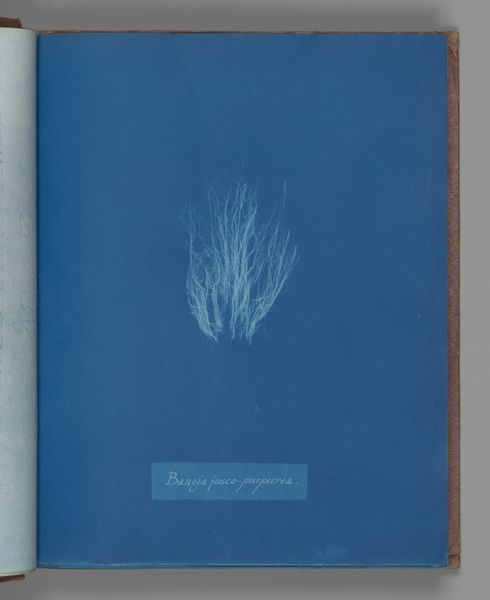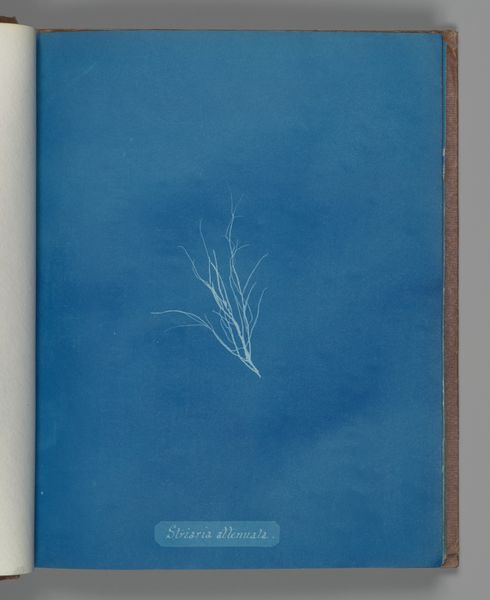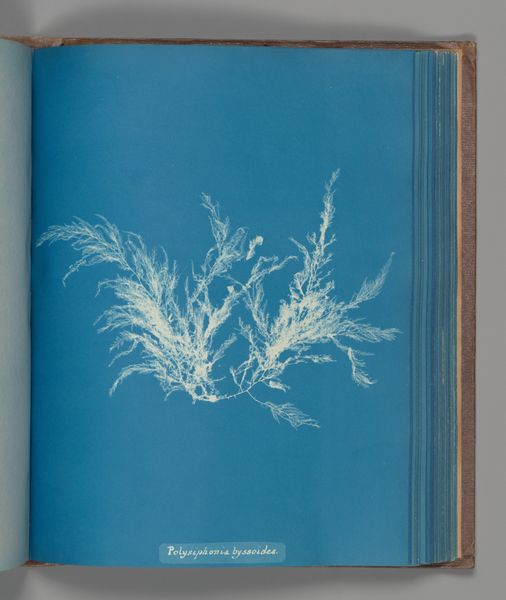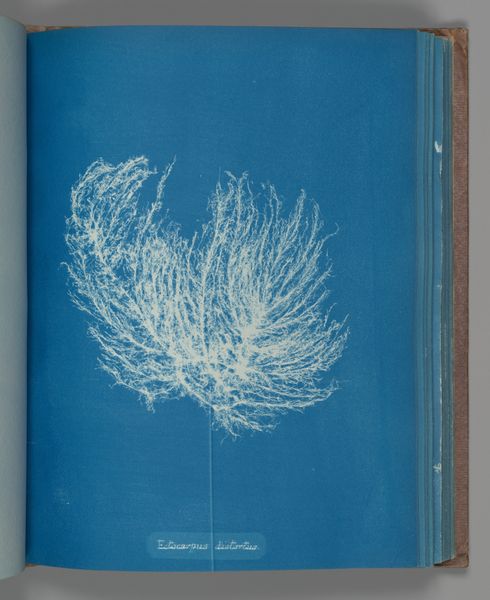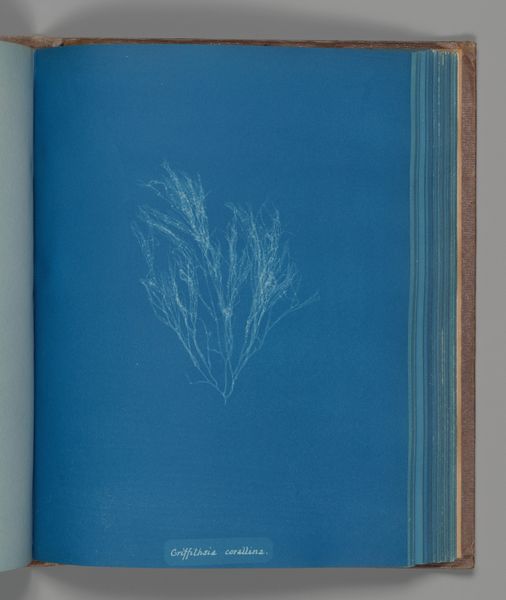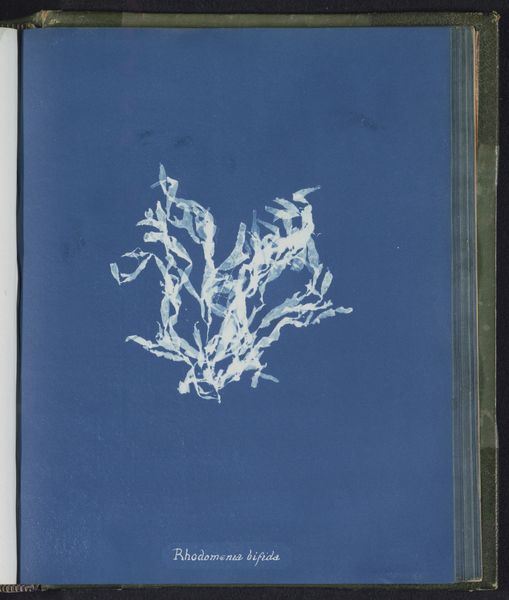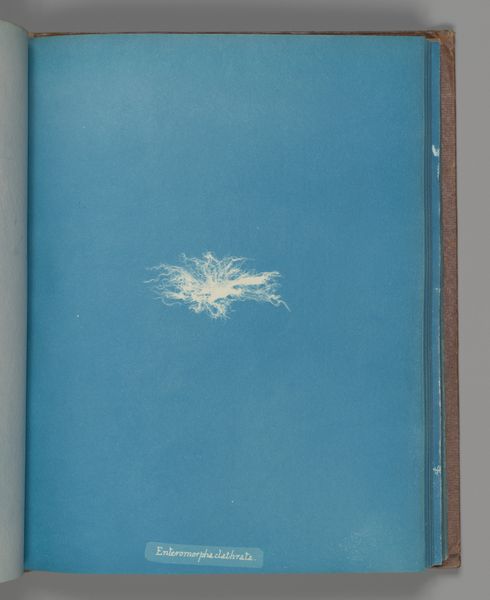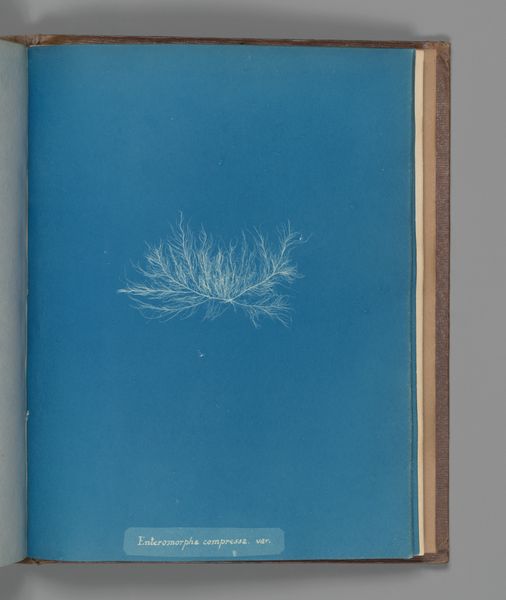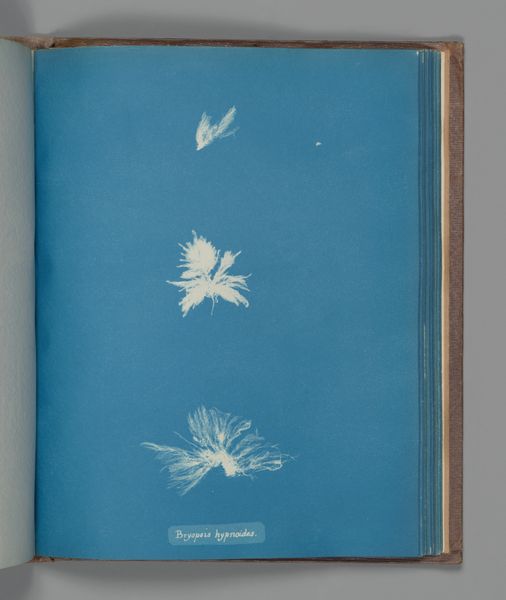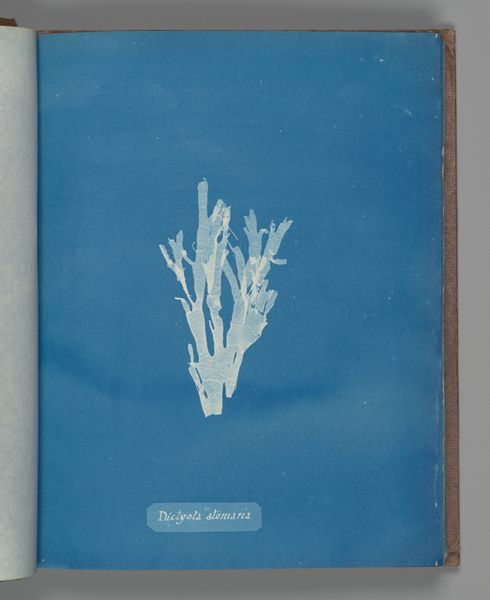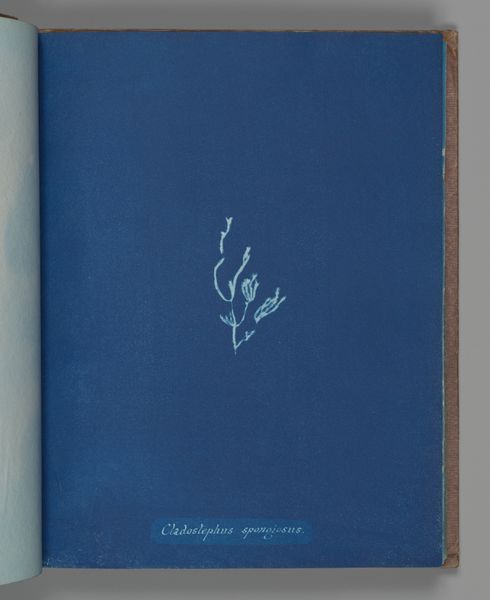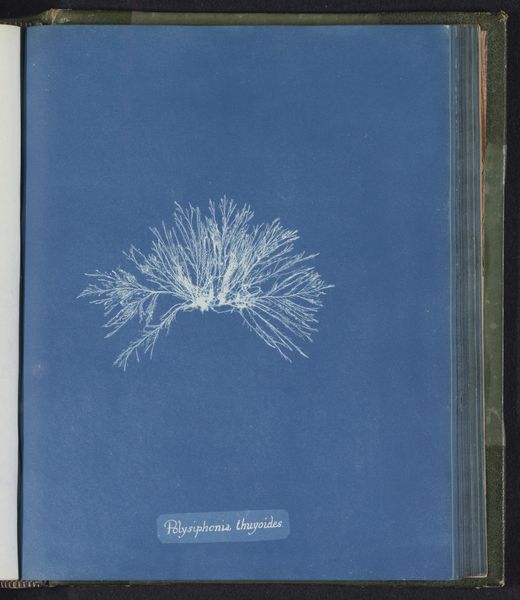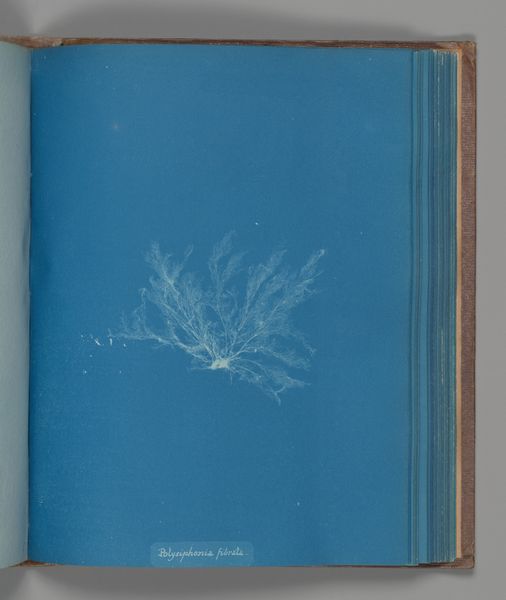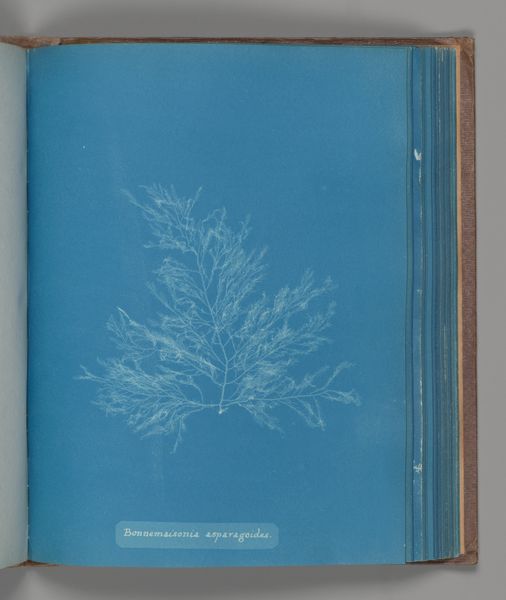
print, cyanotype, photography
# print
#
cyanotype
#
photography
Dimensions: Image: 25.3 x 20 cm (9 15/16 x 7 7/8 in.)
Copyright: Public Domain
Curator: Look at this compelling work! This is Anna Atkins's "Dictyota dichotoma," created between 1851 and 1855. What's your first reaction to it? Editor: I’m struck by the simplicity and elegance of its composition. The cyan-blue background so starkly offset by the ethereal white algae form really draws my eye. It’s almost ghostly. Curator: Indeed. It is fascinating to consider Atkins's position in science and art history. She was documenting botanical specimens, and simultaneously engaging with artistic expression using the cyanotype process. This opens discussions about the intersections of science, art, and gender during the Victorian era. Editor: I agree. The cyanotype process itself is rather interesting. It gives the image such a unique visual quality, that intense blue. I wonder what prompted her decision to utilize this methodology rather than others, say, drawing by hand? Curator: It was likely born from necessity as much as anything. Her father, being a scientist, certainly influenced her approach to documenting these plants directly. Atkins was using the very latest technology available to her, making her a pioneering figure in scientific illustration produced by a woman in a male-dominated field. Her choice speaks to the pursuit of both precision and perhaps an artistic distancing from the very object depicted. Editor: True, by removing direct manual intervention, it perhaps suggests a quest for a kind of objective representation, even while acknowledging the undeniable aesthetic dimension. It feels surprisingly modern, which is amazing for a photograph—well, a cyanotype—from the mid-19th century. Curator: Exactly! Its coolness challenges any sort of objective naturalism and forces us to consider these types of photographic illustrations beyond a singular point of view. The political and social realities surrounding 19th-century scientific endeavor highlight discussions about access, representation, and the gendering of intellectual fields. Editor: You know, seeing it this way has reshaped my original assessment. I came in fixated by the lines and tones but understand how, through examining its position and place, one discovers a much deeper meaning and appreciation. Curator: And for me, dissecting the framework surrounding its visual being enriches my insight. Ultimately, this brings depth, understanding and resonance to how we engage with art.
Comments
No comments
Be the first to comment and join the conversation on the ultimate creative platform.
